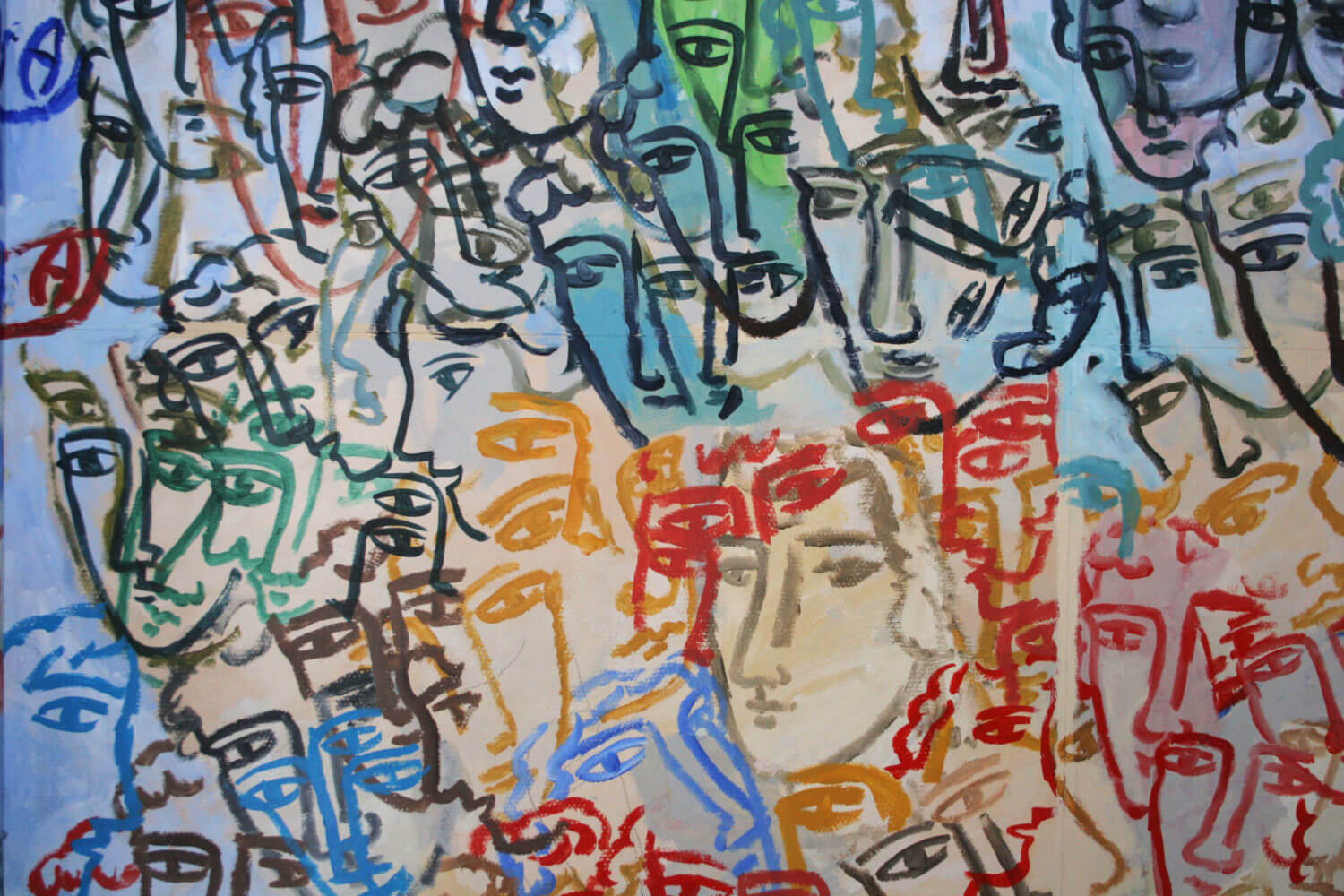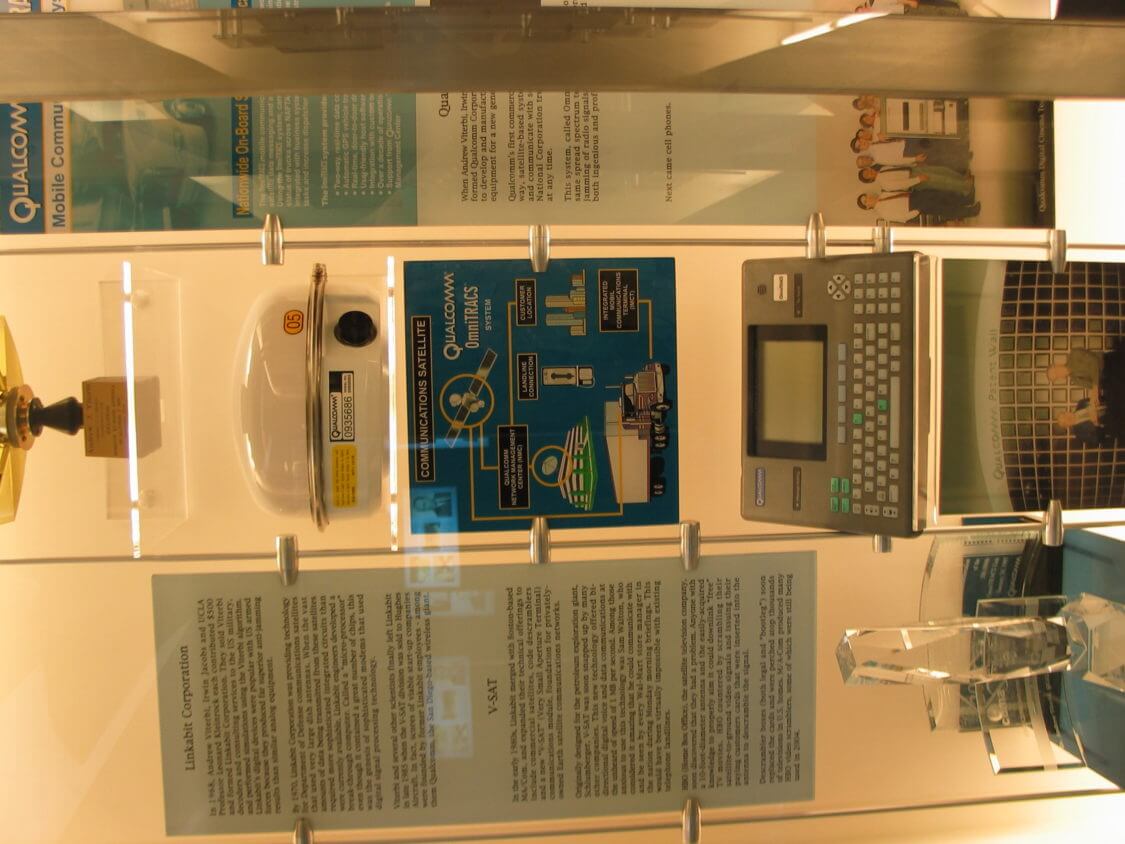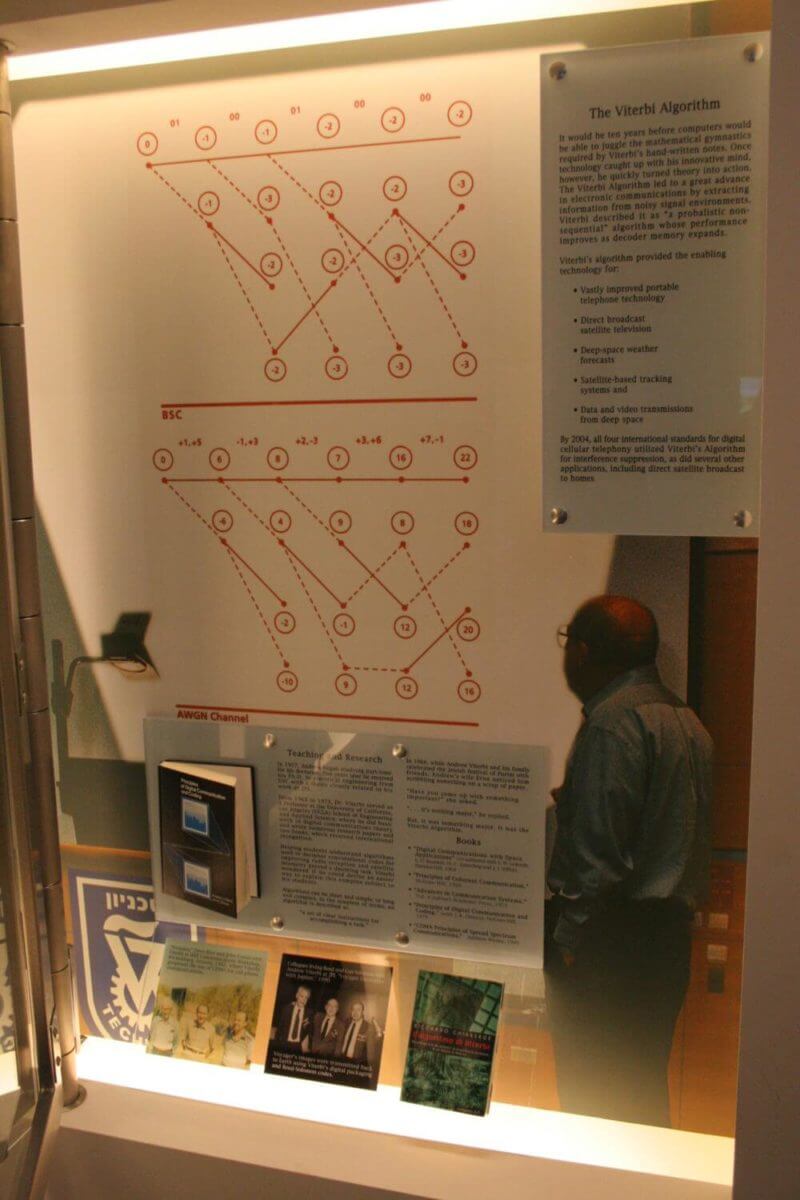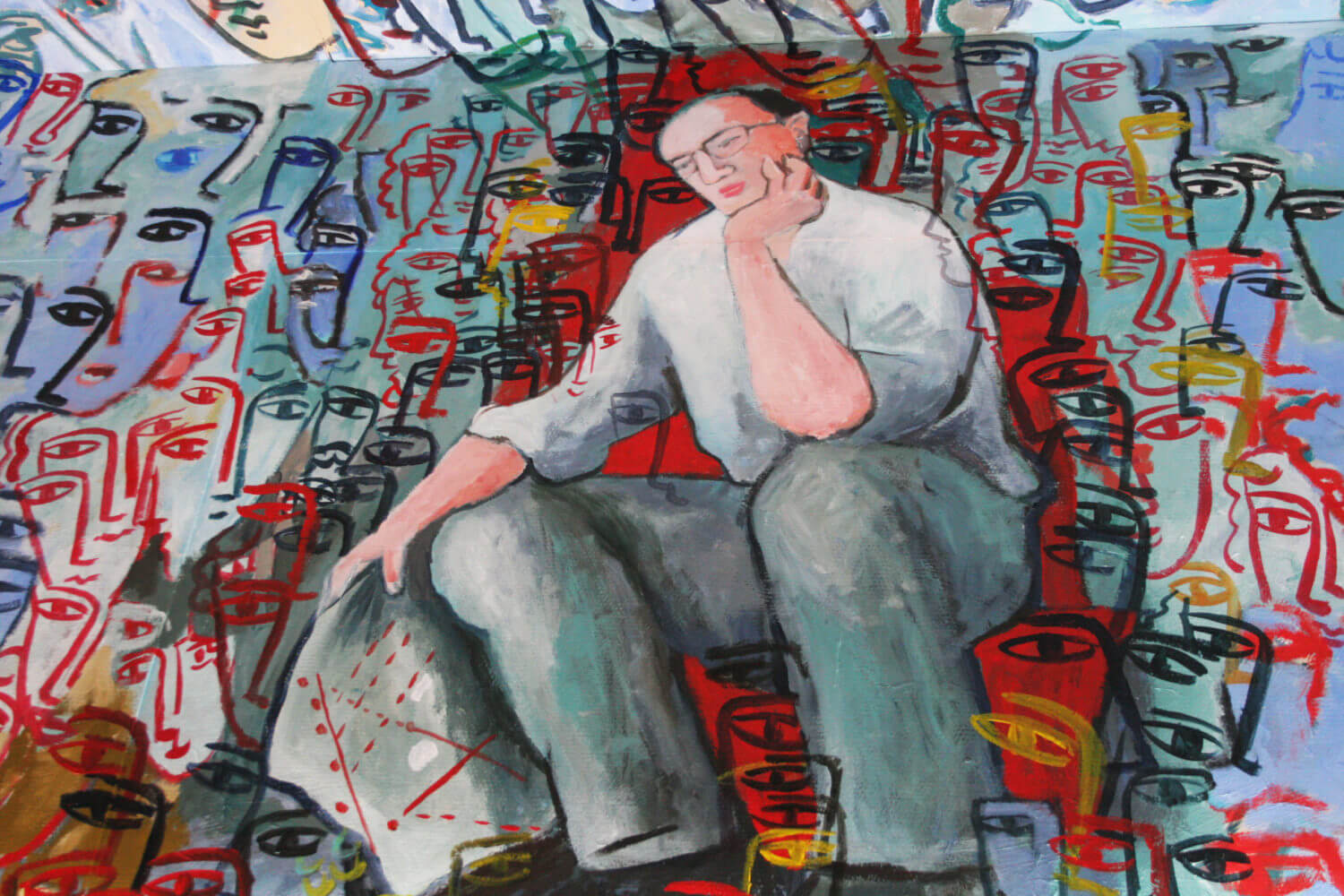The Viterbi Museum
Welcome to the Viterbi Museum, a small hidden jewel at the University of Southern California Andrew and Erna Viterbi School of Engineering
The Viterbi Museum is open by appointment, please contact Viterbi Facilities.
The museum is on the second floor of Ronald Tutor Hall, next to the Baum Student Lounge on the southwest side of the building, adjacent to the elevators.
Designed by A.C. Martin and Associates, the same firm that designed Tutor Hall, it consists of three rooms of display cases, artifacts, photographs, papers, mementos and a video presentation of Andrew Viterbi’s illustrious career. Two of the rooms are graced by stunning original murals covering portions of the walls and ceilings.
Andrew & Erna Viterbi: The Journey and the Legacy
Tour the Museum
The Family Room
The family room traces the journeys of the Viterbi and Finci families in Italy and Sarajevo prior to World War II, depicting each family’s struggles to reach the United States.
Back-lit displays describe Erna (Finci) Viterbi’s harrowing childhood of persecution in Sarajevo and Montenegro, Italy, where she and her Sephardic Jewish family, found refuge and before eventually immigrating to Los Angeles. The Viterbi family fled from Bergamo, Italy, to New York Harbor in 1938, and then to Boston where young Andrew Viterbi grew up.
Looking up from the center of the room, visitors see an elliptically shaped Impressionist ceiling mural, painted with bold brush strokes by the noted Italian artist Sandro Chia. The domical painting is a celebration of Andrew and Erna’s union, bringing together the swirl of blue sky and sea-green ocean waves as the two reach out for their futures.

A colorful swirl of blue sky and ocean green bring heaven and earth together in Sandro Chia’s joyous mural of young Andrew and Erna Viterbi on the ceiling of the Viterbi Museum’s family room.
The mural is lit with white lights to bring out the colorful hues of blue and sea green and the walls supporting the mural are made of Venetian plaster.
The Library
The library is where a selection of Andrew Viterbi’s papers, books and other publications are housed. The room is furnished with an Italian-crafted solid walnut table and chairs, and a built-in walnut bench along the west wall.
A Sandro Chia Impressionist-style ceiling mural depicts faces overlapping each other, symbolizing the vast number of the people that Viterbi has not only influenced in the past, present and future, but has connected.

Sandro Chia's Impressionist-style ceiling mural of faces representing the vast number of the people that Viterbi has influenced and has connected.
Andrew J. and Erna Viterbi Family Archives
The digital version of the Viterbi Archive can be accessed from the Viterbi Museum and in hard copy in the USC Libraries Special Collections Department.
The Andrew J. and Erna Viterbi Family Archives documents the career and professional activities of Dr. Andrew Viterbi, noted researcher, scholar, innovator, and businessman, as well as provides information about the Viterbi and Finci families.
The professional papers consist of audio materials, awards, certificates, clippings, correspondence, memoranda, manuscript materials, patents, photographs, presentations, publications and reports that are useful in following Dr. Viterbi's career and provide insight into his contributions to the field of digital communication.
The family materials include certificates, clippings, correspondence, diplomas, drawings, photographs, publications, and research materials from the Viterbi and Finci families.
The Gallery
The gallery is the largest of the rooms and is devoted to the technological innovations that Viterbi pioneered.
Glass-encased displays, designed by Howard Sherman and Associates, document key moments in the young scholar’s career with photographs, papers and magazine articles about his work.

This display shows Andrew Viterbi’s first company, Linkabit, which he formed with faculty colleagues at UCLA.
Viterbi and a handful of other prominent pioneers in satellite communication were featured on the cover of a 1958 issue of Life magazine as they studied transmissions in the control room of Explorer 1, the first U.S. satellite to orbit earth.
Viterbi’s groundbreaking paper in 1967 describing an algorithm that would eliminate much of the interference in satellite communications at the time – the Viterbi algorithm – is also part of the collection.

This display showcases the Viterbi Algorithm.
Additional display cases feature many of the electronics that revolutionized cellular communications.
The gallery ceiling features a second Chia mural, which is meant to convey Viterbi’s fascination with the spacelessness of wireless communications.

Sandro Chia’s mural in the gallery is meant to depict Andrew Viterbi’s fascination with the spacelessness of wireless communications.
Two “knife-edged” soffits extend outward toward the center of the ceiling, like the underside of a roof overhang, without touching each other. The soffits create a space above the ledge that is illuminated with white lights, allowing visitors to peer over and beyond the horizon.
Published on January 6th, 2017
Last updated on April 14th, 2020







